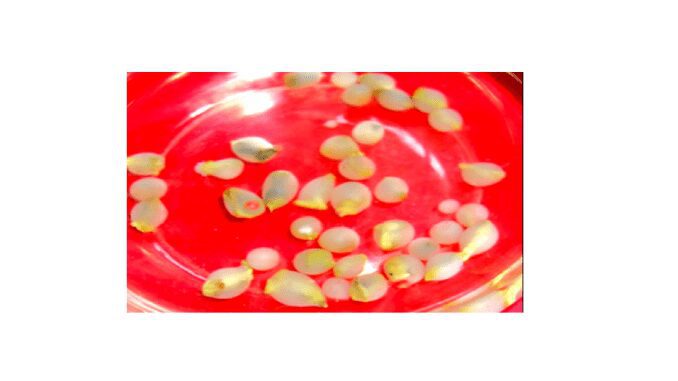
Introduction
Synthetic seed and in vitro propagation are the need of the hour. Mainly for the conservation of those plants that are under threat of extinction.
Synthetic seed is a generic term for a somatic embryo delivery system used as a means of clonal propagation.
Artificial seeds or synthetic seeds have great potential for large-scale production of plants at low cost as an alternative to true seeds (1).
An artificial seed is often described as a novel analog to a true seed consisting of a somatic embryo surrounded by an artificial coat. It is equivalent to an immature zygotic embryo, possibly at the post-heart stage or early cotyledonary stage.
Advantages of artificial seeds or synthetic seeds
1. Better and clonal plants could be propagated similarly to seeds.
2. preservation of rare plant species extending biodiversity.
3. Consistent and synchronized harvesting of important agricultural crops.
4. Easy to handle artificial seeds than natural seeds.
5. Potential long-term storage of artificial seeds that that of natural seeds.
6. Low cost of production and subsequent propagation are other benefits (2).
Somatic embryos have been successfully encapsulated for the preparation of synthetic seeds in several plant species like Santalum album (Bapat and Rao 1988), Citrus reticulata (Antonietta et al. 1999), Theobroma cacao (Sudhakara et al. 2000), Adhatoda vasica (Anand and Bansal 2002), Paulownia elongata (Ipekei and Gozukirmizi 2003).
Process of synthetic seed formation
Mature somatic embryos from plant tissue cultures were used for synthetic seed preparation. The embryonic units were removed from the culture tubes and were encapsulated with an encapsulation medium, consisting of full macronutrients, except for CaCl2 which was excluded from the solution.
1. Components for artificial matrix
- The synthetic endosperm or artificial matrix is composed of minerals and vitamins from the MS culture medium supplemented with suitable PGR.
- Sodium alginate (4 %, 2%, and 1 % w/v) Sodium alginate (1, 2 %) and Gelatin (1, 2 %).
2. Method for synthetic seed preparation
- By dissolving different concentrations of sodium alginate alone or in combination with gelatin (1, 2 %) in distilled water or MS culture media.
- The solutions were autoclaved for 15 mins. at 121°C temperature and 15 psi pressure.
- The sterilized solutions were placed in the laminar airflow.
- The BM was used for the storage of the synthetic seeds and to test their germinability.
- The somatic embryos isolated are submerged in a solution of different ratios of sodium alginate alone or in combination with gelatin according to the type of encapsulation applied.
- And subsequently picked up with forceps and dropped in a beaker containing complexing solution viz. calcium chloride in order to seal the capsule.
- This was done carefully and precisely so as to encapsulate the whole tissue.
- The flask containing embryos was then placed on the orbital shaker and shaken at 60-80 rpm for 20 mins to complete the complexation process.
- The calcium chloride was later decanted. The encapsulated embryos were again washed with sterilized double-distilled water twice by placing the flask on an orbital shaker for 15 min each to remove the traces of calcium chloride.
- The synthetic seeds were finally dried on sterilized filter paper to remove excess water before inoculation on a suitable medium or stored as such at 4oC.
- The frequency of germination in synthetic seeds was calculated using the following formula.
Frequency of Germination (FG) = Number of synthetic seeds exhibiting germination/ total number of synthetic seeds inoculated X 100
